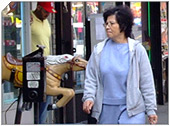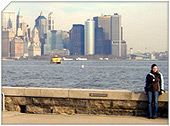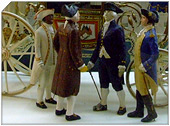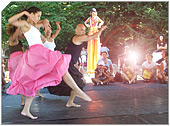Morrisania, The Bronx, New York City
|
Getting Started
Index
NYC Neighborhoods
Manhattan
Brooklyn
Queens
Bronx
Staten Island
NYC Icons
Chrysler Building
Flatiron Building
Empire State Building
Safe NYC
NYPD
FDNY
NYC Weather
NYC Climate
NYC Weather Forecast
Winter Season
Spring Season
summer Season
Fall Season
NYC History & Politics
New York City History
Tammany Hall and Politics
New York City Politicians
New York City Personalities
Culture of Gotham City
Culture of the city
Cultural diversity
City in popular culture
|
Morrisania is a neighborhood in the southwestern section of the borough of the Bronx in New York City. Its boundaries, starting from the north and moving clockwise, are: the Cross Bronx Expressway, Crotona Park North, Crotona-Prospect Avenues, 161st Street, and the Grand Concourse. The neighborhood's name is of somewhat low currency, possibly due to the difficult pronunciation (it is pronounced like "more-ih-SAN-ee-ah", as well as the preference among many to simply refer to the area as the South Bronx. The neighborhood is part of Bronx Community Board 3. Morrisania's zip code is 10456.
From 1670, the land of the neighborhood was the estate of the Morris family in Westchester County.
In 1790, Lewis Morris, owner of the estate and signer of the Declaration of Independence, proposed the land as the site of the federal capital.
Morrisania was sparsely populated until 1840, when Gouverneur Morris Jr., son of the famous congressional delegate and grandson of Lewis, allowed a railroad to be built across the property. In 1848, he sold the land next to the line for the development of a new town called Morrisania Village. In 1855, additional settlements along the rail line became the town of Morrisania, with its political center in the original 1840 village. At first the village was an early forerunner of today's bedroom communities, populated by people who worked in Manhattan, but it quickly developed their own local industries and craftsmen as it developed into a full-fledged town (Jackson, 1995).
In 1874, the area was annexed to New York City (then consisting only of Manhattan) as part of the Twenty-Third Ward. In 1887, the Third Avenue Elevated was extended to area and provided easy and quick access to and from Manhattan. By the time the New York City Subway was extended to the area in 1904, a large influx of immigrants had given the neighborhood an urban character, with tenements replacing houses as the dominant form of dwelling (Jackson, 1995).
Morrisania is the site of the infamous Charlotte Street, which then-President Jimmy Carter visited, declaring the South Bronx to be the worst neighborhood in the United States. While the South Bronx, and Morrisania in particular, were once a symbol of urban decay in the 1970s, the neighborhood has largely cleaned up in recent years as new public housing units have been built, in addition to suburban ranch-style homes on Charlotte Street.
In 2003, the City rezoned several blocks along Third and Washington Avenues, allowing for residential development in a manufacturing area. As a result, several formerly vacant parcels of land have been redeveloped with affordable housing and retail projects.
This area's main intersection is 163rd Street and 3rd Avenue. The IRT White Plains Road Line (2 5) serves this neighborhood at Prospect Avenue. Also, several buses, including the Bx6, Bx15, Bx17, Bx21, Bx35, Bx41, and Bx55 take Morrisanians to several subways as well as Manhattan's Washington Heights, and Harlem.
Former New York mayor Ed Koch was raised in Morrisania (though Koch identifies his childhood home as Crotona Park East, which is a subsection of the neighborhood.) Grandmaster Flash is a current resident of the neighborhood.
|
New York City Search
Quick NYC
|
|
|
 How safe is New York City?
How safe is New York City? Contrary to popular belief, the City consistantly ranks in the top ten safest large cities in the United States. The NYPD is the largest municipal police force in the world and has it's own Movie/TV Unit. |

New York has a humid continental climate resulting from prevailing wind patterns that bring cool air from the interior of the North American continent. New York winters are typically cold with moderate snowfall.  New York Weather Forecast New York Weather Forecast |

New York's two key demographic features are its density and diversity. The New York City metropolitan area is home to the largest Jewish community outside Israel. It is also home to nearly a quarter of the nation's South Asians, and the largest African American community of any city in the country.  Ethnic composition Ethnic composition |

New York Newspapers
 
|



 New York Weather Forecast
New York Weather Forecast
 Ethnic composition
Ethnic composition


















